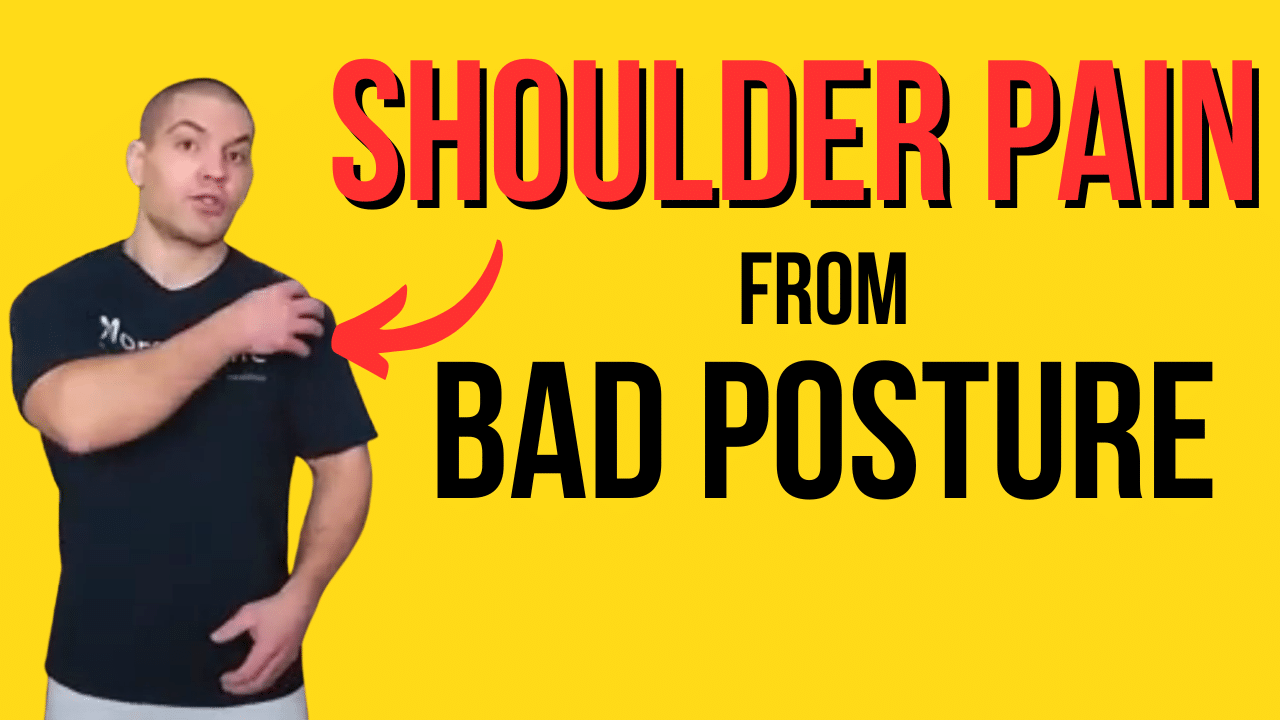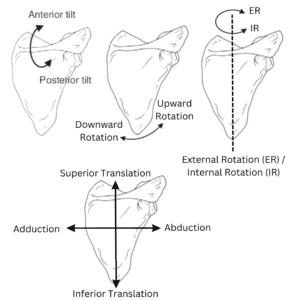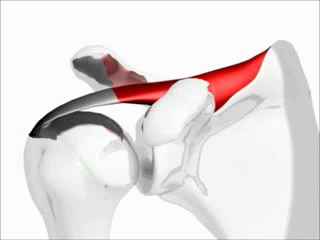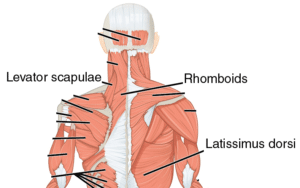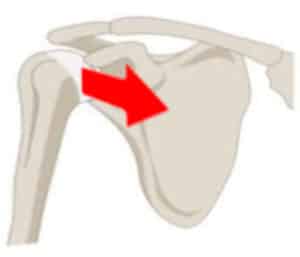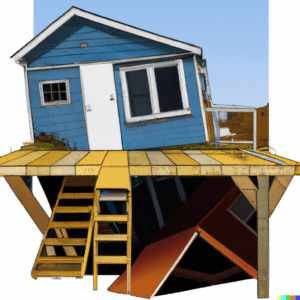Bad Posture Can Cause Shoulder Pain
In this post, you'll learn 7 ways that bad posture can cause shoulder pain as well as some easy posture tips you can use to instantaneously improve shoulder pain.

How Can Bad Posture Cause Shoulder Pain?
There are a few different ways that bad posture can cause shoulder pain.
When healthcare professionals talk about posture and shoulder pain, it's common to hear the phrase, "forward head, rounded shoulders".
However that's an oversimplification.
That's the reason why physical therapy works for some people with shoulder pain but not others....
Because if you use a one-size-fits all approach to treat "forward head, rounded shoulders", then when some other postural problem is causing your shoulder pain, the treatment doesn't work.
So I'm going to take a deep dive into a few different posture problems that might cause shoulder pain.
I'll summarize them quickly, and then cover each of the ways in more depth below.
Additionally, I'll give some tips to help each of the posture problems so that you can relieve your shoulder pain, often nearly instantaneously.
7 Ways Bad Posture Can Cause Shoulder Pain
- Shoulder blades tilted forward
- Shoulder blade is too high
- Shoulder blade is too low
- Shoulder blade downwardly rotated
- Ball of the shoulder is too far forward in the socket
- Shoulders twisted inward
- Your shoulder pain is coming from your neck
Posture Of The Shoulder Blades
To understand the postural dysfunctions related to the shoulder blade, you need to understand a bit of terminology.
The medical name for the shoulder blade is the scapula.
The scapula only has one bony connection to yours spine through the collar bone, or clavicle.
Because of this, the scapula is mostly suspended in muscles and can for the most part move freely in space other than the fact that it lays on the back of the ribcage between the second and seventh thoracic vertebrae (T2-T7).
The Shoulder Blades Can Move In Many Different Ways
They can rotate around 3 different axes and translate along 2 different axes giving them 5 different "degrees of freedom" in terms of movement.
The 5 types of movement of the scapula are:
- Anterior tilt / posterior tilt
- Upward rotation / downward rotation
- Internal rotation / external rotation
- Superior translation / Inferior translation
- Abduction / adduction
The image below shows these movements pictorially.
Shoulder Blades Tilted Too Far Forward
This is the classic "rounded shoulders" posture.
However, "rounded shoulders" posture may consist of two different type of movements:
- Anterior tilt of the shoulder blade
- Internal rotation of the shoulder blade
The net effect is that it brings the acromion process of the scapular downward and inward, which narrows the space through which the rotator cuff tendons run.
Typically the suggested solution to rounded shoulders posture is to sit up tall and and squeeze your shoulder blades together.
And that suggestion works for some people, but there are a few problems with that blanket statement:
- It doesn't take into account whether the problem is one of internal rotation or anterior tilt. Squeezing your shoulders together affects internal rotation. Sitting up tall creates thoracic extension, but not really posterior tilt of the shoulder blades.
- The shoulder blades are supposed to round forward a little bit. Often I see people over-correct with squeezing their shoulder blades together, which can create upper back pain between the shoulder blades.
- Likewise, excessively tipping your shoulder blades "down and back" can create excessive scapular depression, which we'll discuss further below.
Shoulder Blade Elevation Posture
Another way that bad posture can cause shoulder pain is if one shoulder is too high. This may come from a slight scoliosis in your spine. However, it can also come from the upper trapezius and/or levator scapula being too stiff.
Postural causes of stiffness in the upper trapezius and levator scapula include always leaning on one elbow, holding your head tilted to the side, or sleeping with a pillow that's too low.
Stiffness in these muscles can cause muscle knots in the shoulder or shoulder blade.
Excessive use of your levator scapula when lifting your arm above shoulder level keeps the scapula from upwardly rotating like it needs to in order to prevent pinching the rotator cuff. This type of shoulder pain is sometimes referred to as shoulder impingement syndrome.
Conversely, your upper trapezius may get stiff if it's used as a compensation for a rotator cuff injury.
If your upper trapezius and levator scapula are too stiff, doing neck stretches can help, but ultimately, you want to find the root cause of why they got stiff in the first place.
If you'd like to discover the root cause of your shoulder pain, you can click here to request a Free Discovery Visit.
Shoulder Blade Depression Posture
Just you can get shoulder pain from your shoulder blade being too high, likewise you can get shoulder pain from it being too low as well
However, the mechanism is slightly different.
For one, when your shoulder blade it pulls down on your cervical (neck) vertebrae. Additionally, it creates tension on brachial plexus, which is the bundle of nerves that runs between your neck and your shoulder.
Together these things can cause shoulder pain that radiates down your arm.
From a mechanical perspective, your shoulder blade also needs to elevate as you raise your arms overhead.
If your shoulder blade doesn't do that, you can pinch the tendons of your rotator cuff. This creates shoulder impingement syndrome as well.
Shoulder Blade Downward Rotation Posture
Regardless of whether or not your shoulder blades are elevated or depressed, your scapula needs to be able to upwardly rotate as you raise your arm.
Failure to rotate the "socket" of the shoulder upaward as you raise your arm can cause impingement of the rotator cuff tendons. As you can see in the image above, 3 muscles in the shoulder blade help upwardly rotate your shoulder blade. These include the:
- Upper trapezius
- Lower Trapezius
- Serratus anterior
If these muscles are too weak, you won't be able to upwardly rotate your shoulder blade.
Additionally, if other muscles in your your back such as the levator scapula, rhomboids, or latissimus dorsi are too stiff, they'll also prevent upward rotation.
Here are two exercises to help correct scapular downward rotation posture:
Anterior Glide Of Shoulder Posture
This type of posture has to do with the position of the head of the humerus, or the "ball" of the shoulder relative to the socket of the shoulder (glenoid fossa).
When this happens, it makes you more likely to pinch your rotator cuff tendons when moving your arm, particularly in motions of reaching overhead, reaching behind your back, or reaching across your body.
One of the main postures that causes a forward glide of the shoulder is standing or sitting with your elbows behind the midline of the body.
And the solution?
Don't do that!
Keep your elbows at or in front of the plane of your body most of the time.
Shoulder Internal Rotation Posture
This is related to but different from rounded shoulder posture, or scapular internal rotation.
Scapular internal rotation relates to the shoulder blade posture with respect to your trunk.
Shoulder internal rotation or humeral internal rotation has to do with the rotation of your upper arm with respect to the shoulder blade.
Internal rotation can be seen if your elbows point outward rather than backward when looking from behind.
Excessive internal rotation of the shoulder causes a bump on the shoulder called the greater tuberosity to move under the arch of the shoulder and cause shoulder impingement syndrome (pinching of the rotator cuff tendons).
Your Shoulder Pain Is Coming From Your Neck
As mentioned at the beginning of this article, "forward head, rounded shoulders" posture is often named as a cause of shoulder pain.
We've already discussed the rounded shoulder, part of that, but where does the forward head come in?
When you head is too far forward, you flex or forward bend excessively from the lower neck (C7-T1), and extend excessively in the upper and middle neck (skull to C5). The C4 and C5 nerve roots refer pain to the top of the shoulder and the shoulder joint proper.
So if you have a pinched nerve in your neck, that can also cause shoulder pain independent of any rotator cuff impingement.
Furthermore, if you tend lean your head to one side, this further compresses the nerve roots on the side that you lean your head toward.
Additionally, even if your pain isn't being referred from your neck, milder compressions of the nerve roots in the neck may lead to weakness of your rotator cuff or shoulder blade muscles, which can then in turn cause shoulder impingement.
Take home point: Make sure to rule out involvement of your neck whenever you have shoulder pain.
How Do You Correct Shoulder Pain From Bad Posture?
That's the easy part (in theory). It's also the hard part in practice.
There are 2 simple solutions to stop shoulder pain attributable to ANY posture:
- Spend LESS time in the posture that's causing your problem.
- Spend more time changing between different postures.
There's no one "ideal" posture for every single person. People come in all different shapes and sizes. Additionally, we we're made to be in one static posture all day long (a.k.a. "chest up, shoulders back, chin down"). Moving around frequently and changing between postures will help you prevent muscle imbalances that develop from any one sustained posture - good or bad.
If you do happen to notice a specific posture that causes your shoulder pain though, take steps to correct that particular postural component, rather than just using stereotypical "good posture".
Examples for each of the posture syndromes mentioned above include:
- Shoulder blades tilted forward - lift your chest up and tilt your shoulder blades backwards. This is NOT the same as squeezing your shoulders together
- Shoulder blade is too high - conscientiously relax the muscles on top of your shoulder such that you allow your shoulder blade to fall This is a skill, but you can learn to do it with mind-body techniques. Additionally, getting trigger point therapy or dry needling can help speed up the process.
- Shoulder blade is too low - support your elbow on armrests, pillows, or desks when sitting. When standing put your hand in your pocket. Stretch your lats on that side.
- Shoulder blade rotated downward - wear bra straps closer to the neck rather than out by the tip of the shoulder. Avoid carrying heavy purses, bags, or briefcases on that side.
- Ball of the shoulder is too far forward in the socket - avoid reaching far behind your. When laying on your back, put a pillow under your elbow. Stretch the muscles in the back of the shoulder. In addition, you should strengthen your rotator cuff.
- Shoulders internally rotated - think about keeping your elbows in or thumb up when reaching overhead.
- Your shoulder pain is coming from your neck - Sit and stand with your head above your shoulders, your chin slightly tucked, and your head neutral (not tipped to one side or the other). Learn posture to prevent neck and shoulder pain when working at a desk.
How Do I Know Which Posture Is Causing My Shoulder Pain?
There are 3 ways to tell which posture is causing your neck and shoulder pain:
- Take a picture of yourself from the front, back, and side and use the guidelines in this post.
- Have a friend or family member look for you and let you know what they see.
- See a specialist physical therapist who can help you figure out the problem faster and get you on track to the correct solution right away.
Often hiring a professional to do the work for you gets the job done in less time and with a better end-result. (Think about painting your house or building a deck).
"It was hard work, but I did it myself."
Need Help For Shoulder Pain?
If you need help to figure out if your posture is causing your shoulder pain, and how to resolve the problem as quickly as possible, tap the button below to request and appointment with one of our specialists.
Like this post? Check out our other posts about posture:
Can Poor Posture Cause Chest Pain?
How To Relieve Lower Back Pain When Sitting: The Ultimate Guide

